Chapter: Civil : Principles of Solid Mechanics : Strain and Stress
Two Dimensional Stress or Strain
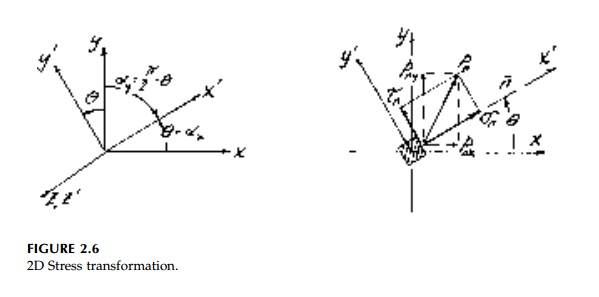
Two Dimensional Stress
or Strain
In the majority of important practical
situations, the general three-dimensional stress-strain array (Figure 2.3e)
can, to an acceptable degree of accuracy, be simplified to a 4-component
symmetric tensor by assuming either no stress or no strain components on one
set of planes (say the z faces). The first is called 'plane stress'
corresponding to free surfaces normal to the z axis so that ?z
=?xx
=?zy =0 and is the most
common and the most easily achieved in the laboratory. For plane stress there
will generally be strain normal to the unrestrained z planes (ez
Not
equal to
0) but no shearing distortion (i.e., ?zy =
?zx = 0).
'Plane strain' arises physically in situations such as dams, pipelines, embankments, long shafts, etc. where there are no displacements in the z direction nor distortion in the z plane. Therefore Ez =? zx = ?zy = 0. In general for plane strain ?z!= 0 but ?zx =?zy = 0.
Thus, in either case, the in-plane
tensor reduces to:
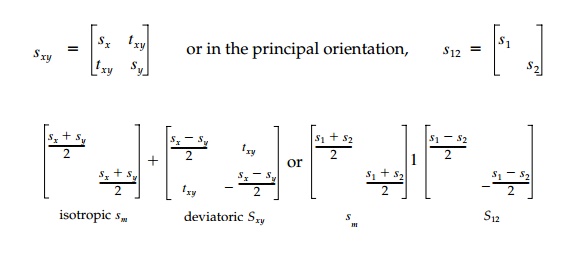
?z and EZ
are principal and either I3? or I3? is
zero.*
The 2D transformation
(rotation of coordinate axes) from the z, y, z to a new x,
y, z axes can be deduced from the 3D equations [Equations (2.13)].
The direction cosines in terms of the positive counterclockwise angle of
axis rota-tion are shown in Figure 2.6.
Therefore,
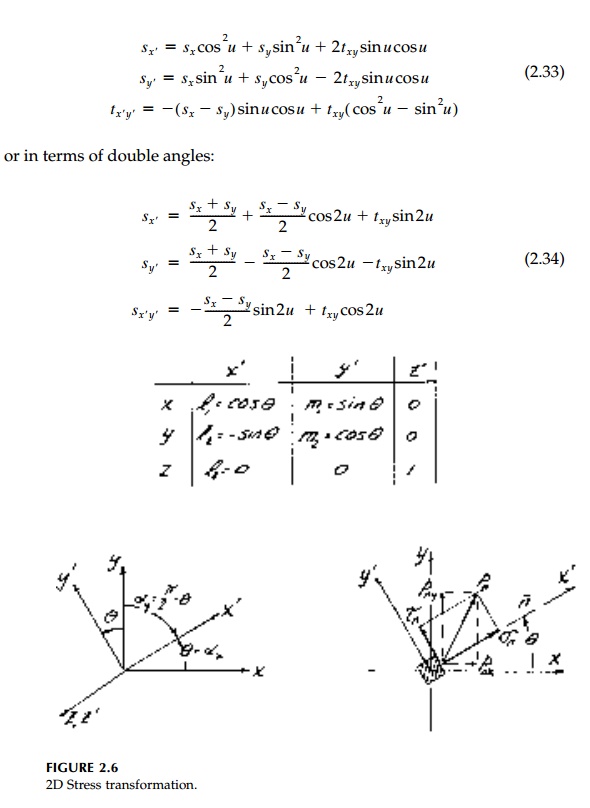
The transformation of the 2D strain
tensor is the same by analogy, with Ex,
Ey
, ?xy/2, replacing ?x?y?xy
.
The 2D characteristic equation becomes

The coefficients of the characteristic equation
must again be the same in any orientation so the 2D invariants are:
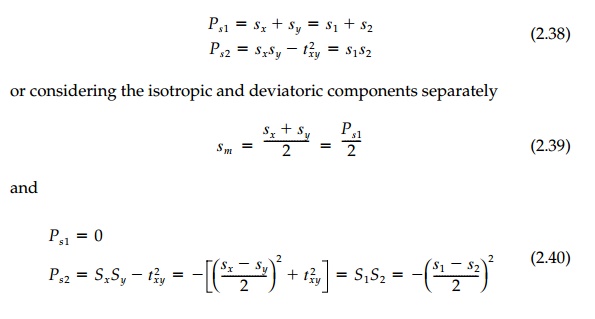
In principal space the 'octahedral'
orientation along the 'space diagonal' becomes the 'quadrahedral' orientation
along the 'square diagonal.' In this orientation the quadrahedral stress
components are:
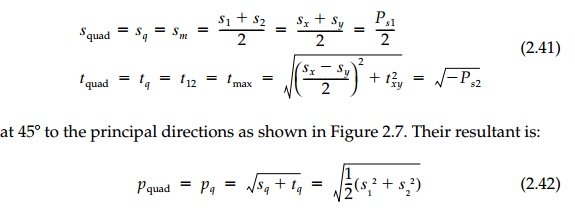
Thus
in the quadrahedral orientation, we again see all the invariants as
indi-vidual, uncoupled stress components in themselves. There can be no doubt
that this is what nature actually feels at a point in a 2D stress field. Again
the analogous equations for the 2D strain tensor in the plane [Equations
(2.35)-(2.42)] are obtained by substituting Ex
for ?x, Ey,
for ?y, ?xy /2
for ?xy.
Perhaps it should be noted that the
elastic rotation around the z axis in two dimensions xy
?2 or ?z of Equation (2.5) (the asymmetric component of the
relative deformation tensor) is already an invariant.* While in 3D the elastic
rotation is a vector with three components, in 2D, ?z =?
q at a point is actually a scalar quantity involving only
magnitude since the direction is known. There is no comparable asymmetric
component of stress, but elastic rotations occur due to stress fields and must
not be forgotten while we are preoccupied with symmetric stress and strain
tensors.
Related Topics